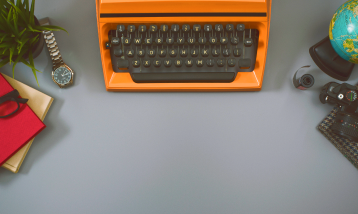
Role of Technology and Innovation in Industrial Design

01, July 2025
Introduction
A recent study found that industrial companies embracing digital product development expect a 19% boost in efficiency, while 41% already use data analytics and AI in their design processes. These numbers highlight how technology and innovation are shaping industrial design, helping designers create better, faster, and smarter products.
Industrial design shapes the look, feel, and function of everyday objects—from furniture and kitchen tools to cars and smartphones. Nowadays, digital tools, user-first thinking, and sustainable materials are transforming the field. Let’s explore how these changes are unfolding—and how Avantika University, a leading industrial design college in Mumbai, empowers students to thrive in this modern design era.
Role of Technology and Innovation in Industrial Design
-
Evolution of Industrial Design Through Technology
Industrial design has evolved significantly due to technological advancements. Earlier, designers depended on hand-drawn sketches and clay models. Today, with digital tools like CAD (Computer-Aided Design), 3D modeling software, and simulations, the design process is faster, more accurate, and more efficient. Designers can now visualize, test, and refine ideas in virtual environments before creating physical models. This shift marks a major innovation in industrial design, improving product quality, reducing errors, and shortening the design-to-production timeline.
-
Role of Innovation in User-Centered Design
Innovation in industrial design means creating products that meet real user needs in new and better ways. User-centered design focuses on the experience of the end user. With the help of technologies like user feedback platforms, behavioral tracking tools, eye-tracking software, and digital personas, designers can deeply understand how users interact with products. This helps them design objects that are comfortable, safe, accessible, and intuitive. Innovation ensures that the product not only works well but also feels right in the hands of the user.
-
Digital Fabrication and Prototyping
Digital fabrication has changed how designers bring ideas to life. Tools like 3D printers, CNC machines, and laser cutters allow for rapid prototyping, meaning working models can be created in hours instead of weeks. This process helps designers test form, fit, and function quickly. If changes are needed, prototypes can be adjusted and reproduced at low cost. This makes the design process more flexible, cost-effective, and time-saving, while also encouraging experimentation and creativity.
-
Integration of Emerging Technologies
Modern products are becoming smart and connected. The role of technology is crucial as designers now work with tools like IoT, AI, AR, and VR to make products more interactive, intelligent, and efficient. These innovations help create futuristic designs that adapt to user needs and offer a better overall experience.
-
Sustainability Through Innovation
Sustainability is now a key focus in industrial design. Designers are using eco-friendly materials, reducing waste, and creating long-lasting products. Tools like lifecycle analysis help measure a product’s environmental impact. Innovation also supports recyclable, modular, and energy-efficient designs, making products better for both users and the planet.
-
Collaborative Design Ecosystems
Today’s design process involves teamwork. Designers work with engineers, marketers, and developers using cloud-based tools that allow real-time collaboration. This ecosystem encourages creative ideas, faster development, and stronger results, as different experts contribute to a single shared vision.
How Avantika University Encourages Innovation in Design
Avantika University is one of the best places to study industrial design in India. Here’s how it helps students stay ahead:
- Modern Design Curriculum: Students learn about digital design tools, design thinking, product development, and sustainable design through real projects and workshops.
- Learning Across Subjects: Avantika follows an interdisciplinary approach. Students learn not just design but also engineering, technology, and business skills.
- Advanced Labs and Tools: The university has state-of-the-art labs with 3D printers, AR/VR kits, laser cutters, and innovation hubs where students build prototypes.
- Industry Exposure: Students get to work on live projects, internships, and studio sessions with companies, helping them understand how design works in real life.
Conclusion
Technology and innovation have transformed the field of industrial design. They help designers create better, smarter, and more sustainable products. For students who want to build a career in this exciting field, choosing the right college is very important. Avantika University combines design, technology, and innovation to help students become future-ready designers. If you're passionate about design and want to make a real difference, this is the place to start.

